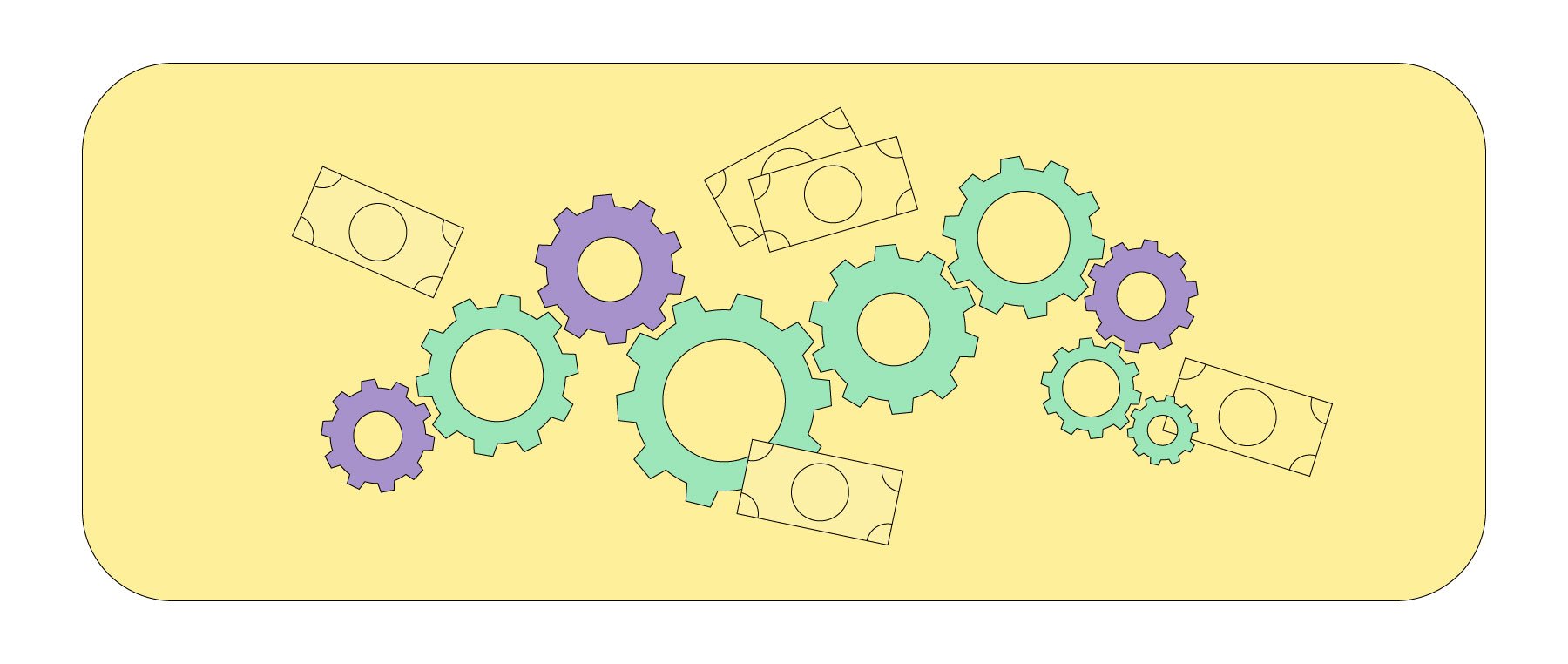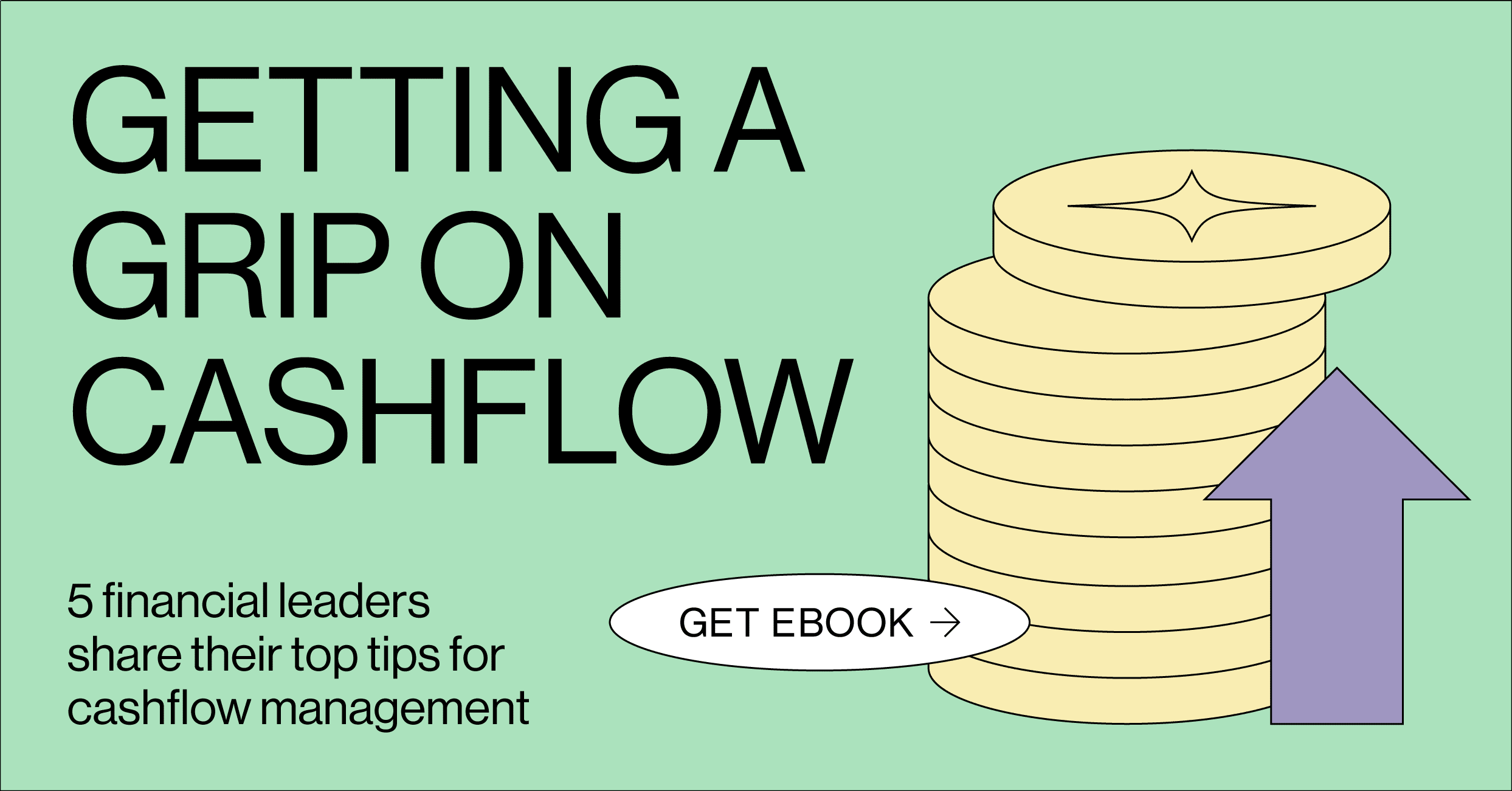Effective cash flow management for small businesses


Fresh insights from 2,650 finance decision-makers across Europe
According to a study performed by Jessie Hagen of U.S. Bank , 82% of businesses fail because of poor cash flow management.
If your business constantly spends more than it earns, we hate to say it, but you’ve got a cash flow problem.
Managing cash flow is tricky but there are plenty of steps that a small business can take to make sure they're ready for success.
Looking for a place to start learning about how to manage cash flow? Read on for small business cash flow top tips, techniques, tools plus advice on managing cash flow from CFOs and financial professionals.
What is cash flow management?

Put simply, cash flow management is the process of keeping track of, as well as analysing, how much money is coming in and out of your business. The three main things to understand about cash flow are: negative cash flow, positive cash flow and profit vs. cash flow.
Cash flow ( noun ): the total amount of money being transferred into and out of a business, especially as affecting liquidity.
Negative cash flow
When you have a negative cash flow, it means your business is spending more money than it’s making. But it doesn’t mean your company is in the red zone per see – your cash flow may just be down temporarily, because of things like mismatched spending and income.
For example, maybe you have large cash outflows for a specific period – like if your company is spending the big bucks on new equipment.
This can also, unfortunately, be a sign of fraudulent activity if the negative cash flow cannot otherwise be explained.
Positive cash flow
On the flipside, we have positive cash flow. A positive cash flow indicates that a company is adding to its cash reserves, meaning you have enough working capital to cover your bills and don’t require additional funding during that period.
But before you bust out the cake and champagne, a positive cash flow doesn’t always mean the business is profitable. The surplus in cash flow could exist due to an influx of loan capital or dividends to shareholders not being paid out yet.
Which brings us to profit versus cash flow . These are not the same.
Profit is typically defined as the balance that remains when a business’s operating expenses are deducted from its revenue.
Cash flow is more important to keep the business operating day-to-day, while profit is more indicative of your business’s overall success.
And like cash flow, profits can be represented as a negative or positive number.
Right, those are the basics of what cash flow is – let's dig a little deeper, shall we?
Why is cash important to a small business?
No business, big or small, can afford to ignore its cash flow. Because cash is what keeps your business ticking over. You need it for daily operations, taxes, purchasing inventory, paying employees and so on.
If you don’t have cash, your business will stop working.
Managing your cash flow is figuring out when you’ll have cash ready to be used, how to get it faster and how to keep an eye on company spending so you don’t run into future cash flow problems.
Benefits of good cash flow management

There’s a broad range of advantages associated with getting your cash flow management right, but here are some of the key benefits that effective cash flow management can have on your small business:
- Better business decisions
Staying on top of your cash flow allows you to make better plans and decisions. If you don’t have accurate information, you could potentially make a bad decision and put your small business at risk.
- A bird’s-eye view of company spending
An accurate cash flow statement also provides insight into your company’s overall spending. You’ll know exactly where the money is going and why. Plus, it’ll make it easier to identify which areas of the business you can afford to cut costs.
- Solid business relationships
It’ll also ensure you keep solid business relationships . Staying on top of cash flow means you’ll avoid having problems paying suppliers – because no one likes receiving a late payment.
- Get the bank loans you need
Many entrepreneurs and small business owners just starting out will probably depend on a bank or similar financial institution for their business activities. Before approving a loan, the bank will take a look at the financial condition of your company as well as its ability to repay the amount. In addition to tax returns and income statements, an up-to-date and organised cash flow statement will be used as proof.
- Know when it’s time to expand
Managing your cash flow effectively will make it easier for you to know when it’s the right time for your small business to expand and grow. Because growth requires a lot of cash – renting a bigger office, hiring more people, purchasing more laptops and so on. If you don’t have the funds to match the planned growth, you’re gonna run into some trouble.
Discover our top tips from conversations with CFOs, Heads of Finance and other financial professionals all Pleo using to step up their own business spending 👇

Common cash flow problems in small businesses
We know how effective cash flow management will contribute to a successful future for a business, but what does poorly managed cash flow management look like? And what are some of the common cash flow problems small businesses run into?
Warning signs of a cash flow problem
A cash flow crisis doesn’t have to take you by surprise. It’s all about understanding the warning signs and better planning of your working capital on hand to get you through those bumpier times.
Here are some common warning signs of a potential cash flow problem:
- Unpaid suppliers
Did you miss (or delay) that payment...again? Regularly skipping payments to suppliers not only signifies that you’re not handling cash well, but it also means that your business relationships are in jeopardy.
- Late payments
On the other hand, having too many slow-paying customers is also dangerous.
It’s common not to get paid right away after providing a service or product, but if your books are starting to pile up with receivables that aren’t being paid in a timely manner there might be some cash flow issues in your future.
- Inadequate financial records
Is your bookkeeping up to snuff? As a business owner or CFO, if you aren’t sure which forecast is the most up-to-date or what your cash flow break-even point is for this month, how are you even supposed to catch an issue in the making?
Causes of cash flow problems
Now we know what to watch out for, so here are some of the most common causes of cash flow problems for small businesses.
1. Expecting profitability too fast
Many start-ups don’t become profitable for two or three years . If you’re not prepared for this, that can create cash flow problems from the very beginning.
2. Overlooking overhead costs
If your office rent, car leases and travel costs are too high, this will definitely eat into your finances.
3. Not getting your pricing right
Without a sustainable profit margin, you could always be battling cash flow problems. Make sure to continuously review and track your pricing and cost details so you can be aware if changes are necessary.
Solutions to cash flow problems
Luckily, there are a multitude of steps that can help a small business manage cash flow effectively and avoid these common problems.
When your business is first starting out, it’s important to set up a realistic timeframe for profitability and make sure your business has enough cash to function until you hit that milestone.
And reducing overhead costs isn’t only important in those first few years, it can really make a big difference in the long-term profitability and cash flow of your business.
We know that getting your pricing right is an art, but it’s crucial to continuously review and track pricing and cost details so you can be aware if changes are necessary.
How to manage cash flow in a small business
Let’s get that cash flowing!
Ok, so you’ve got the cash flow basics down, identified common warning signs, know why it’s crucial and how your business will benefit from it... but where to begin? What are some easy techniques to implement (alone or together)?
Small business cash flow tips
We all know that it’s best to speak to the people who experienced running the highs and lows of companies’ finances firsthand – here are five quick insights for managing your cash flow from CFOs and financial professionals all using Pleo:
1. It all starts with a forecast
"Diligently collecting information allows you to spot trends in order to stay on top of your forecast. Allowing you to work smarter and focus on what really matters." - Sam Bradley , Head of Finance at Cookson Adventures
2. Make sure there’s money left in the pot
"Don’t forget about a business savings account – it’s a good way to maximise interest without putting short term cash flow at risk. That way when you’re a little strapped for cash, you know where to get it." - Robert Collings, Chartered Accountant & Head of Finance at Flux
3. Plan for everything, even the bad stuff
"No one likes 'surprise' cash outflows. Make sure you look at all angles when forecasting, including a cash flow deficit. Identify business risks and prepare in advance." - Sarah Ashworth , “The Money” at DeadHappy
4. Keep things simple and transparent
"Don’t dive too deep into the rabbit hole – find tools or techniques that help you manage your cash flow in a realistic way (especially if you’re an early growth start-up)." - Søren Alnøe, COO at Celvivo
5. Automate and digitise finances as much as you can
"Want to bring all your cash flow management internal? Why not go digital – it’ll simplify things too. Not to mention, get rid of a lot of manual data entry." - Mathias Sjølin Madsen, CFO at Heymate
Keep reading for our recommendations on cash flow management tools.
Wanna dive deeper into these tips? Download our eBook and get a grip on cash flow today 👇

Cash flow management solutions, our top picks
Following the advice from the professionals, taking your cash flow management digital can help alleviate a lot of manual work and help avoid human errors that can pop up when managing your cash flow.
Here are our top choices for cash flow management solutions:
1. Agicap
A software system that meets the cash management needs of all SMBs. From cash flow forecasting to real-time monitoring to customised reporting and consolidation.
Agicap was designed to meet the needs of all industries, so don’t worry about it not fitting with your business. And the customer support is phenomenal - 5 stars all around.
2. Fluidly
A tool that provides real-time cash flow forecasting, plus integrates with Xero and Quickbooks. Fluidly even sifts through your accounting data to build predictions for future payments.
It can also help you match with the UK’s leading lenders, including CBILS providers.
3. Spotlight Reporting
Built by accountants and a top-rated Xero staff pick, Spotlight Reporting’s solution offers a range of comprehensive performance reports, full three-way forecasting and customizable dashboard.
Although built with accountants in mind, the tool is a perfect fit for any business owner, CFO or franchise seeking greater clarity and insights into how cash moves through their business.
4. Float
A great tool for budgeting and forecasting that also integrates with Xero to build a visual, easy-to-understand picture of your current and future cash.
Float updates these visual representations daily based on bills, invoices and paid transactions so you can track budget versus actuals automatically.
5. Futrli
Futrli likes to be thought of as a weather forecast for your business.
Its Predict product is a short term (<1 year), 3-way forecasting solution that’s made for small businesses. From analyzing every sale, spend and payment to adding predictions via custom plans to cash and accruals VAT & GST being calculated.
And that’s just the basics – there are plenty of nifty features you can add as your business grows.
Now that you know all the top cash flow tips for your small business, learn how to control business spending as your company grows .
And if you’re thinking of getting a company credit card to support that growth, our advice on how to choose a company credit card will be just in time.
